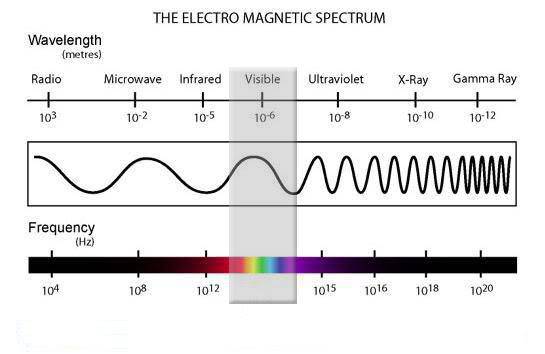Discover your potential in Your Birth Chart
What is a wave
The term wave, before being a scientific term , is a common word with a very ancient history. Although waves in water are actually just a particular type of wave (see for example transverse and longitudinal waves and wave equation in water), I like to think that such an ancestral word is linked to a concept that, in physics, is equally widespread, and of great importance.
An electromagnetic wave is emitted whenever a charged particle is accelerated by some force.

What kind of waves exist
Waves in water are together the prototype of the wave, as illustrated in the previous paragraph, and a rather particular case, as they are waves that mainly affect the separation surface between two media (air and water).
In the case of electromagnetic waves, due to the complexity of their interaction with matter, waves of the same physical nature can have very different effects depending on their frequency, ranging from radio waves used in telecommunications, to visible light, to dangerous ionizing radiations such as x-rays and gamma rays.
Sound waves, as well as being one of the physiological means of human communication, are actually a particular type of mechanical waves.
Wave measurement
Measuring the properties of seismic waves such as amplitude, direction of oscillation, times of arrival at the seismograph not only indicates where the epicenter of an earthquake is, but can give valuable information about the internal structure of the earth.
Waves allow us to study distant phenomena in space and time: astronomy and astrophysics base their observations on the study of the spectrum of electromagnetic radiation from celestial bodies, interstellar matter, and deep space. The radiations studied occupy the entire spectrum of electromagnetic waves.
The electromagnetic spectrum
Light carries information in ways you may not realize. Cell phones use light to send and receive calls and messages. Wireless routers use light to send cat images from the Internet to your computer. Car stereos use light to receive music from nearby radio stations. Even in nature, light carries many types of information.
I telescopi sono collettori di luce e tutto ciò che sappiamo da Hubble è dovuto alla luce. Dal momento che non siamo in grado di viaggiare verso una stella o prelevare campioni da una galassia lontana, dobbiamo dipendere dalla radiazione elettromagnetica - la luce - per portarci informazioni da oggetti distanti nello spazio.
Il telescopio spaziale Hubble può visualizzare gli oggetti in qualcosa di più della semplice luce visibile, inclusa la luce ultravioletta, visibile e infrarossa. Queste osservazioni consentono agli astronomi di determinare determinate caratteristiche fisiche degli oggetti, come la loro temperatura, composizione e velocità.
What is the electromagnetic spectrum?
The electromagnetic spectrum describes all types of light, including those that the human eye cannot see. In fact, most of the light in the universe is invisible to our eyes.
The light that we can see, made up of the individual colors of the rainbow, represents only a very small portion of the electromagnetic spectrum. Other types of light include radio waves, microwaves, infrared radiation, ultraviolet rays, X-rays, and gamma rays, all of which are imperceptible to human eyes.
All light, or electromagnetic radiation, travels through space at 186,000 miles (300,000 kilometers) per second, the speed of light. This is how long a car will go through its life, traveled by light in just one second!
Source: https://hubblesite.org/contents/articles/the-electromagnetic-spectrum
Light travels in waves

Light travels in waves, just like the waves you find in the ocean. Like a wave, light has several basic properties that describe it. One is the frequency, which counts the number of waves that pass from a given point in one second. Another is wavelength, the distance from the peak of one wave to the peak of the next. These properties are closely and inversely related: the higher the frequency, the shorter the wavelength and vice versa. One third is energy, which is similar to frequency in that the higher the frequency of the light wave, the more energy it carries.
Your eyes detect electromagnetic waves that are roughly the size of a virus. Your brain interprets the various energies of visible light as different colors, ranging from red to purple. Red has the lowest energy and purple the highest.
In addition to red and purple there are many other types of light that our human eyes cannot see, just as there are sounds that our ears cannot hear. At one end of the electromagnetic spectrum are radio waves, which have wavelengths billions of times longer than those of visible light. At the other end of the spectrum are gamma rays, with wavelengths billions of times shorter than those of visible light.
Scientists use different techniques with telescopes to isolate different types of light. For example, although our eyes cannot see ultraviolet light from a star, one way to perceive it is to pass the star`s light through a filter on a telescope that removes all other types of light and fall on a special telescope camera. sensitive to ultraviolet light.
What is a wave
It`s happened again this week and NASA has been compelled to tweet about it the fact that is hasn`t changed any star signs.
A new zodiac sign has not just been discovered.